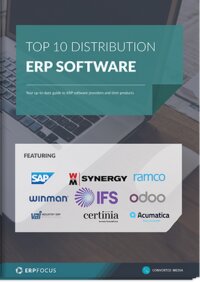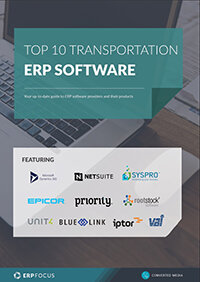Essential shipping and distribution features for retail ERP
Retail today still includes a physical store. More and more, though, retail means distribution systems to sell products to customers without that old-time physical presence.
Bearing this in mind, what distribution and shipping features should a retailer look for in today’s ERP systems?
Drop shipping
Retail selling does not require a product in inventory these days. Drop shipping is a process where the retailer buys a product and requests delivery to the customer and not to the store or the retailer’s warehouse. ERP provides for a purchase order with the customer’s address as the delivery point. When the product is delivered, two events occur: the customer gets a bill and the supplier gets a check.
Retailers can also set up drop shipments from the store which minimizes the requirement to stock every size and color or other qualities. If a customer wants something in blue and knows the yellow one fits, they can schedule a delivery to their home at the time of purchase.
Returned merchandise
Modern ERP systems can help eliminate store returns that clutter the stock room and require a shipment back to the supplier. ERP can coordinate with parcel delivery companies and the customer only needs to print a shipping label and take his product to a convenient drop-off point.
Guide: seven steps to selecting distribution ERP
Supply chain visibility
Knowing what is on the way to a store or warehouse and when it will be on hand allows a retailer to sell merchandise he does not have yet with confidence that the customer will get delivery when expected. Supply chain visibility also helps a retailer know when a shipment might still be on another continent or held in customs. This knowledge can prevent the embarrassment of scheduling a sale when the product is due to be late.
Automation
Retail ERP systems make automation possible saving costs and speeding up deliveries. A cashier ringing up the next-to-last shirt can automatically trigger a replenishment shipment from the warehouse. Accepting an online order creates a sales order to be filled, prepares the cash receipt from the credit card processor, schedules a pick list in the warehouse, and creates a parcel shipment tracking number with no further human intervention.
A wide range of integration options
Retail ERP systems often must connect to other software and modern ERP systems have the connection built in or are ready for linking through web services or EDI as needed. Retailers will almost always need a link to parcel delivery services. There might be a perfectly good POS or point of sale system in the stores and ERP can receive inputs to update inventory as sales are rung up.
Free white paper

7 steps to selecting distribution ERP
Get expert advice on distribution ERP selection and requirements analysis

Featured white papers
Related articles
-

ERP for Food Distributors: Key Functionality
In a modern world where products are tailored to consumers, why should ERP for food distributors ...
-

Secret KPI: Why Your ERP Implementation Team Matters More Than Software
Learn how Godlan ensures successful ERP implementation for manufacturers with proven strategies &...
-

ERP & Logistics: Optimizing the Supply Chain
Read about the steps you can take to optimize your supply chain through ERP software logistics ma...




